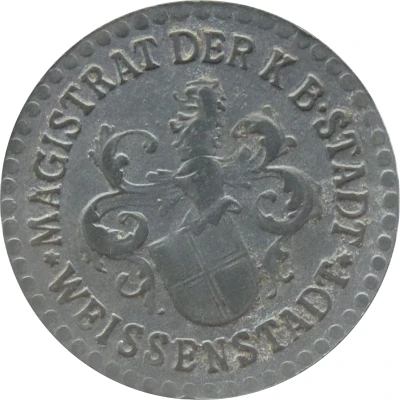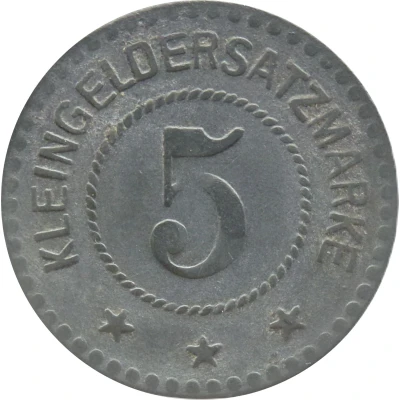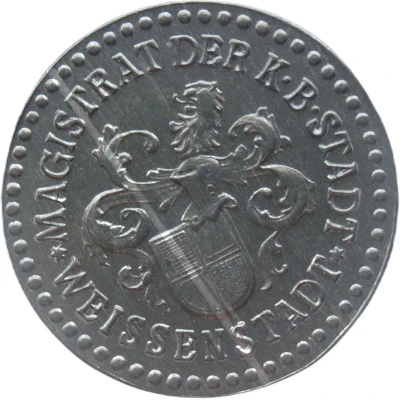


© Willem63 (CC BY-NC-SA)
5 Pfennigs - Weissenstadt ND
1917 year| Zinc | 1.6 g | 16.3 mm |
| Issuer | City of Weißenstadt (Federal state of Bavaria) |
|---|---|
| Emperor | William II (Wilhelm II) (1888-1918) |
| Type | Standard circulation coin |
| Year | 1917 |
| Value | 5 Pfennigs (5 Pfennige) (0.05) |
| Currency | Mark (1914-1924) |
| Composition | Zinc |
| Weight | 1.6 g |
| Diameter | 16.3 mm |
| Thickness | 0.9 mm |
| Shape | Octagonal (8-sided) |
| Technique | Milled |
| Orientation | Medal alignment ↑↑ |
| Demonetized | Yes |
| Updated | 2024-10-04 |
| Numista | N#356457 |
|---|---|
| Rarity index | 91% |
Reverse
Pearl rim, legend surrounding rope circle with denomination centered
Script: Latin
Lettering:
KLEINGELDERSATZMARKE
5
★ ★ ★
Edge
Plain
Interesting fact
The 5 Pfennigs - Weissenstadt ND (1917) coin was minted during a time of economic turmoil in Germany, known as the "Inflationary Period" (1914-1923). During this time, the value of the German mark (the national currency) dropped significantly, leading to a period of hyperinflation. As a result, many Germans turned to alternative forms of currency, such as local emergency currencies like the 5 Pfennigs - Weissenstadt ND (1917) coin, which was issued by the City of Weißenstadt in Bavaria. This coin, made of zinc and weighing 1.6 grams, was used as a substitute for the rapidly devaluing German mark and was accepted as legal tender in the region. Despite its small denomination, the 5 Pfennigs - Weissenstadt ND (1917) coin is a unique and interesting piece of numismatic history, reflecting a time of economic upheaval and innovation in Germany.



